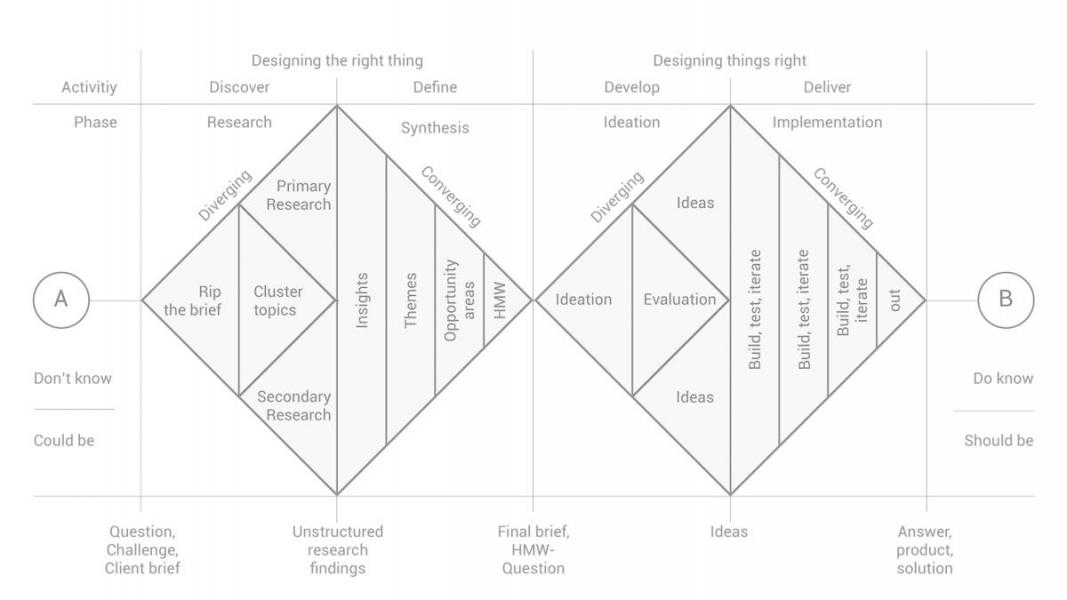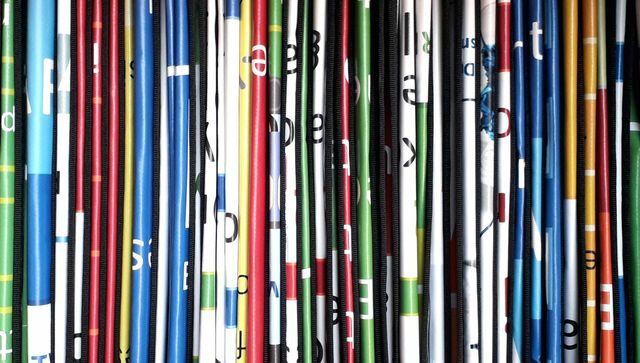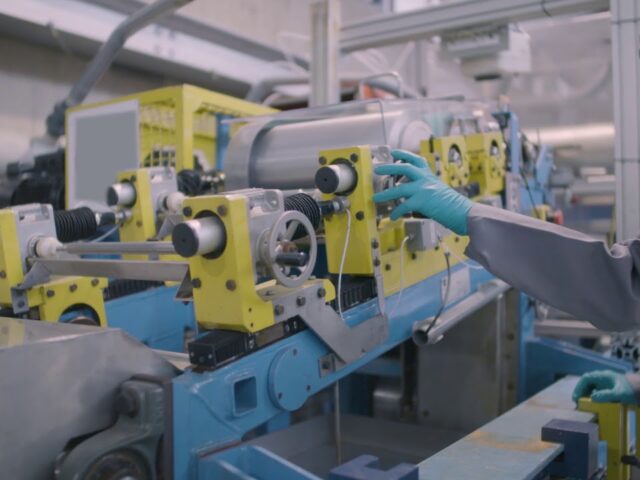Jan Leyssens is a strategic designer who in recent years has specialised in translating sustainability ambitions into concrete actions, business models and products/services. His goal – and that of his company switchrs? Designing companies, products and services that generate impact in the short term and guiding companies towards sustainability and circular economy in the long term. About two years ago, Jan Leyssens wrote this opinion piece for the Zeronaut section on www.mo.be.
I am always surprised at how many people who are involved in sustainability are not involved in design. Thinking day in and day out about the social engineering of the world, the malleability of how we organise ourselves as a society. To be convinced in some way that we can design a system in which we can create well-being for all within the boundaries of our globe. And then not to invest any time or energy in the process underlying all those changes. There are many things I do not understand, this is one of them.
We wallow a little too easily
in examining preconditions.
In raising public awareness.
Sometimes I feel like we’re so busy measuring when, at what speed, and with what impact we’re going to drive this system against the wall, that we forget to wonder where the steering wheel is and how those pedals actually work.
In nature you have the fight-or-flight reflex, but there is also a little brother: paralysis. Get out of the way of the rabbit staring into the headlights and forgetting how it worked.

I think we are wallowing a little too easily in exploring preconditions. In raising public awareness. Here in doing so we often forget (or ignore?) that consciousness is not the same as action. What I think we need at the moment is above all action. Solutions. To designers and entrepreneurs (and if possible the combination of both).
Why design?
In order to avoid a semantic discussion about the exact definition of designs, I would like to discuss a very specific form of design: Ontological design. We are actively designed non-stop by what we have designed. In other words, we can only think what we are thinking now because we have designed things that have enabled us to do so. Everything we design designs our conscious and subconscious mind.
Now that we are even in the Mariana Trench
– the deepest known spot in the ocean –
encountering pieces of plastic
we could say that
there is no place on this planet
where man did not design.
Ontological design is a movement within design sciences that describes where design and consciousness come together (look herefor a good introduction).
Everything that shapes our world as we know it was once deliberately or unconsciously designed. Now that we encounter pieces of plastic even in the Mariana Trench— the most famous place in the ocean— we could argue that there is no place on this planet where man has not designed. There is no more natural environment, only built environment.
And that’s why it’s important to understand the design process. The process that is underlying all the well-being and prosperity that was created, but at the same time the problems we know today entailed.
Our system is not broken, it does exactly what it was designed for. Poor design is also design.
When we look at experts (mostly academics) who are involved in transition management or system thinking, you notice that they almost always come back to an adaptation of the process that forms the basis within the design sciences: the double diamond model. The great advantage of design science is that the process has been tested in practice much more often. Maybe not within sustainability or social innovation, but that’s just a matter of shifting focus.

In the double diamond model you focus first on the design question (designing the right thing), and then on the solution (designing things right). Cru put, you can equate that last piece with a very agile form of project management.
The essence of a good design is not in the result, as with transition and system thinking. The result is actually not interesting.
Designing is not about the result, but about reflection
of the conscious and unconscious assumptions that limit our thinking
when we make decisions.
The essence is the design question that was asked. Design is no more than researching how, starting from that question and taking into account stakeholders, budgets, timing, technological possibilities and so on, we can design a relevant solution that allows us to check whether our question was correct?
So design is not about the result, but about reflecting the conscious and unconscious assumptions that limit our thinking when we make decisions. Design should at all times examine the design question and its own fallacies. Optimize according to the intention, not in function of the product.
What makes the design process so suitable for so-called wicked challenges? In my opinion, there are three crucial issues that do not have an explicit place in many processes:
- Designs start from unknown unknowns
- There is no one-size-fits-all in design thinking
- A design is never finished
If you don’t know what you don’t know yet
Within our wicked challenges everything is linked together. This interconnectivity creates a tangle of cause-and-effect connections that even the best system thinker can’t get out of.
The reason we do so much research on the numbers and numbers and preconditions is because there are so many unknown unknowns.
One of the most frustrating parts of designing is just that you
but at the end of a design process know what you should have investigated at the beginning.
The big difference between classical project management based on science thinking and design is that in design thinking unknown unknowns are the rule rather than the exception. Designers start less from a hypothesis and more from assumptions. The better you can define the assumptions, the better you know where the unknown unknowns are.
One of the most frustrating parts of design is just that at the end of a design process you only know what you should have explored in the beginning (for that reason, for example, design thinking is a rather uninteresting process for science). This is what is called the design paradox. The unknown unknowns only become visible (to a certain extent) by what you discover as a designer in the process of idea generation, prototyping and testing. The sooner you as a designer can start testing and prototypes from theoretical thinking, the more unknowns you will encounter.
Recognizing unknown unknowns as an essential part of the challenge and simply taking it as part of what you create is a huge strength that can give a project the speed it needs.

Context, context, context
In addition to unknown unknowns, there is also the complexity of systemic challenges. So often we are looking for that silver bulletsolution. To the one-size-fits all solution that will suddenly make everything magically right.
So often we are looking for
that silver bullet solution.
To the one-size-fits-all solution
who will suddenly make everything magically right.
Within the design world there is (to a certain extent) an understanding that complex issues need complex solutions. But at the same time, as a designer, you don’t have to develop every part of those complex solutions.
Everything you design is by definition formed by a limited frame of mind, limited resources, limited technology etc.. If you submit a design issue to 5 teams in 5 different continents, there is no doubt that 5 different results will also come out of it.
This is because designers (ideally) do not start from a clearly defined final image, but from a design question. A “how might we…?” question.
The advantage of a “how might we” question is that you can’t answer yes or no to it. “How might we” forces you to think about the various elements that lie at the root of the problem, without already proposing a solution.
Always in beta
And a final, and not to be underestimated, element of design is that it always happens in beta version. A design is never finished.
That is why design requires a form of pragmatic opportunism at a very important time. There will never be a time when all the elements are perfect and you know everything. Good enough is good enough.
As a designer you stop your process
because the money or time has run out,
never because it is finished.
Ready does not exist.
This work in beta also removes a lot of stress that you often find in projects that need to be “finished” upon completion. As a designer, you stop your process because the money or time is gone, never because it’s done. There’s no such thing as finished.
And there lies a nice link with sustainability and social innovation. Wicked challenges are not necessarily always urgent, but they are always relevant. There is no time when social equality will be ‘resolved’, however much we would like it to be.
Many people within the sustainability being are afraid to start, just because there are still errors in their ideas, designs and actions. At the micro level, the biggest brake on sustainable and social innovation is rarely the larger framework (although we like to put it that down), but our colleagues, friends and acquaintances who are also concerned with sustainability.
They will be the first to remind us (often publicly) of everything we have not yet done or forgotten. We often underestimate how hard it is to be reprimanded by your own network for trying to translate the theoretical framework into practice.
Don’t see these opinions as a personal attack, but as feedback on the design that was in beta anyway can help to make it easier to place first, but on the other hand also to improve your design.
And now?
When Kate Raworth wasa guest in Ghent recently, she ended her (it must be said, enormously enthusiastic) lecture with the following quote:
“If being an optimist makes you lazy and rest at ease because someone else will fix it for you, and being a pessimist makes you paralyzed and do nothing, than by all means be an activist.”
I’m a big fan of activism. From the critical regard of the world and others point to their responsibilities. But activists also sometimes struggle with the difference between awareness and action. I think the future of activism lies more and more in providing solutions. In entrepreneurship.
Don’t misunderstand me, I have little to no interest in the status of the self-employed entrepreneur. For me, the essence of entrepreneurship is about entrepreneurship. About doing things. Translating a problem into a solution and reaching as many people as possible with that solution. In addition to design, scale up. Not necessarily in large, but in impact.
My heroes in the world of social and environmental sustainability are the people who dare to step out of the theoretical framework and pragmatically look for opportunities and offer them to others. People who know that what they are doing is not enough, that the solution still has errors, that everything can always be improved, but still do it anyway.
The hardest part is still showing up.



